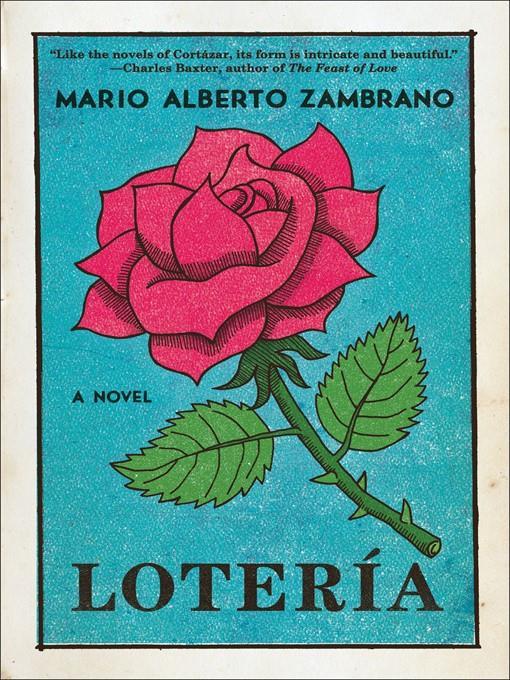
Loteria
A Novel
کتاب های مرتبط
- اطلاعات
- نقد و بررسی
- دیدگاه کاربران
نقد و بررسی

Starred review from April 29, 2013
Lotería is the card-based Mexican variant of bingo and, in the hands of Zambrano, it’s a deck stacked with narrative possibilities. Following her mother’s disappearance and the arrest of her father, 11-year-old Luz María Castillo dwells in the netherworld between state custody and return to Mexico, which her family left before she was born. But Luz is no stranger to in-between states, and, rendered mute by trauma, she addresses her history to God using the Lotería cards that are her sole possession. What follows are 53 chapters, each corresponding to a pictograph—beginning with “La Araña” (the spider) and ending with “La Rana” (the frog). The accompanying sketches assemble Luz’s fractious family life in equally jagged fragments, some tender as “La Dama” (the lady), others deadly as “El Alacán” (the scorpion). The two central figures in Luz’s recollections are her Papí, a tortured alcoholic who terrorizes his family, and her older sister Estrella, who pays a steep price for defying her father. And yet Luz’s strongest memories are of the Mexican border town where she vacations, mariachi music, fireworks, and the roses in her yard. From these, Zambrano coaxes a language that straddles pictures and words, Spanish and English. An intriguing debut and an elegiac, miniature entry in the literature of Latin American diaspora that will break your heart. Agent: Chris Parris-Lamb, the Gernert Company.

February 1, 2013
Here's perhaps the big-news debut of this group, with a 75,000-copy first printing and a nice publicity push. Former professional ballet dancer Zambrano (e.g., Nederlands Dans Theater) has protagonist Luz Castillo use loteria, the Mexican version of bingo, to tell the story of her life. With her father in jail and her sister hospitalized, 11-year-old Luz is in state custody and refusing to speak. But as she writes in her journal, she sifts through the vivid loteria cards (featuring mermaids, stars, and spiders, for instance) and uses them for inspiration. A very good bet.
Copyright 2013 Library Journal, LLC Used with permission.

March 15, 2013
A young Mexican-American girl recounts the heartbreaking dissolution of her entire family. This debut novel from former professional ballet dancer Zambrano, written from the point of view of a tween girl who has inadvertently become a ward of the state, smacks a bit of experimental fiction, largely due to its deliberate construction. It is a journal written by 11-year-old Luz Castillo, who refuses to speak to others. Instead, she shuffles and reshuffles a deck of Loteria cards, a Latin American game of chance featuring 54 macabre representations of various objects or animals. With each flip of the card, Luz reveals some little memory, painstakingly rendered, about her family. It's a slowly told tale delivered in short, ambiguous chapters. "I'm not a piece of news in the Chronicle she can just pick up and read," Luz complains. "It's not like that, not black and white. If anything it's like a telenovela with a ranchera in the background playing so loud you can't even hear your thoughts anymore." Over time, Luz reveals the story of her deeply dysfunctional family--the mother that abandons her children and her Papi who drinks heavily and flies into such a rage over a sexual indiscretion that he breaks Luz's arm. And then there is Estrella, Luz's motherly older sister who lies at death's door in the ICU of a local hospital, her fate even more uncertain than her little sister's. The broken tale and imaginative first-person narration lend weight to this curious novel. It's an impressive first step for an artist exploring a new medium. A contemplative yet discordant collection of stories about where life's scars originate.
COPYRIGHT(2013) Kirkus Reviews, ALL RIGHTS RESERVED.

Starred review from June 1, 2013
Zambrano's stellar debut is proof positive that good things come in small packages. Here the good thingdare we say, the very good thing?is the journal/memoir of 11-year-old Luz Castillo, who has been taken into the state's custody after her father is arrested. Luz's mother has disappeared, and older sister Estrella lies dying in a hospital. Luz, whom some might label a willful child, steadfastly refuses to speak to anyone, least of all her counselor; instead, the child has opted to share her thoughts with God via written entries inspired by the pictures in a deck of Loter-a cards. Zambrano's selection of the Mexican bingo-like game cards as Luz's communication vehicle is sheer genius. Not only is it the girl's favorite game because it calls up happier times, but also because the images, including a tree, a rooster, and death, spur her imagination, unearthing events that otherwise might become forever suppressed. A nonjudgmental observer of her dysfunctional environment, Luz is trying to construct her own moral compass. Although this spare, little illustrated book may seem better suited to young adult readers, rest assured that Luz's story will engage both young and old right up to, and beyond, the startling plot twist.(Reprinted with permission of Booklist, copyright 2013, American Library Association.)

























دیدگاه کاربران